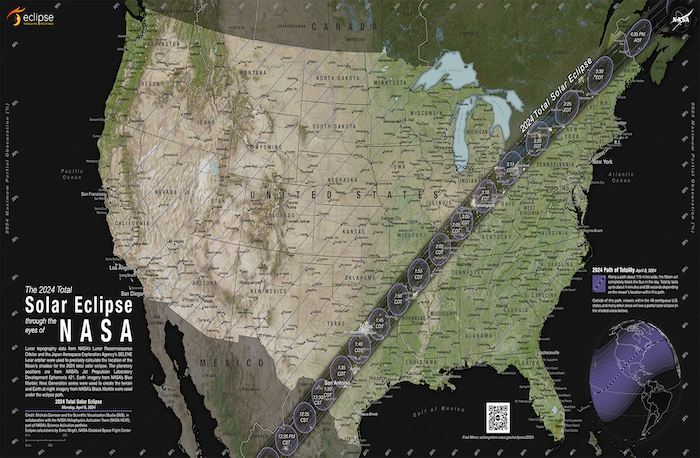During the upcoming total solar eclipse on April 8, illuminated control panels found in appliances and smart home systems throughout North America may dim noticeably – or even go dark completely. According to Sonny Notnow, director of solar research at the Max Prank Institute, electromagnetic fields beyond human perception can interfere with the devices’ normal operation, rendering microwaves, washers and other essential appliances temporarily useless.
“Any outage shouldn’t last too long – maybe ten minutes tops,” said Notnow. “We will be monitoring the situation closely, and urge consumers to notify us of any abnormalities they may encounter.”
Whether the interior lights of refrigerators will also go dark remains unknown, despite years of not-so-scientific experimentation conducted mostly by curious children under the age of five.

The path of totality and partial contours crossing the U.S. for the 2024 total solar eclipse occurring on April 8, 2024. Photo credit: NASA’s Scientific Visualization Studio
The last total solar eclipse visible in the US – in August 2017 – was the first major test of the country’s electricity grid in the age of solar energy. At that time, approximately half of America’s solar production was put into shade as the eclipse tracked across the lower 48, in a 70-mile-wide corridor stretching from northern Oregon to South Carolina. The event tapped into energy sources beyond solar, with natural gas, hydropower, wind power and other renewables forced to function above their usual capacity.
Experts caution that this unusual phenomenon may recur during the next solar eclipse visible in the contiguous United States in 2044. Some, however, venture that it could happen even sooner, pointing to April 1, 2025 as the most likely date.
Photo credit: muratart/AdobeStock (top)









